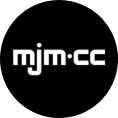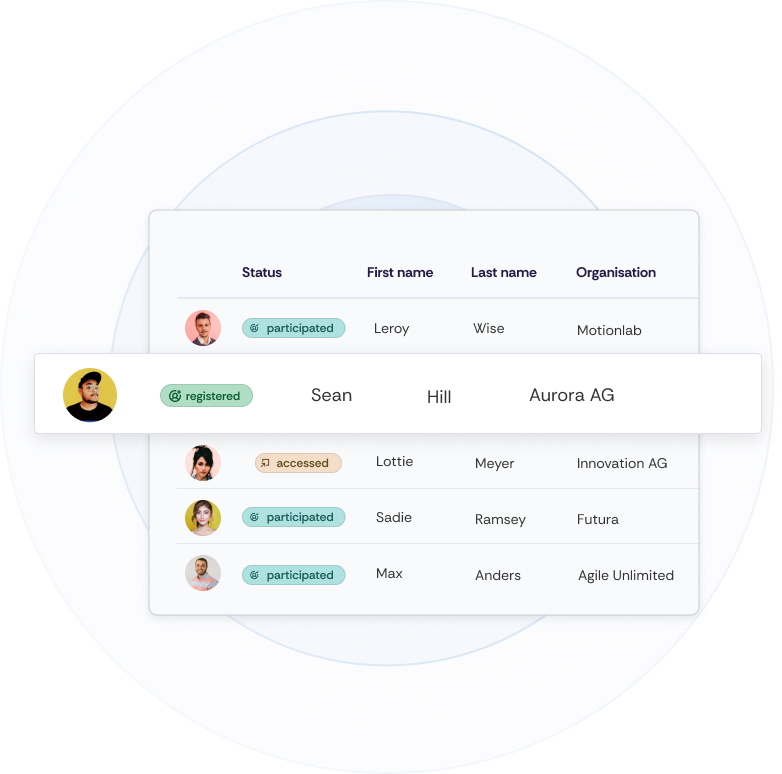What Is participant management?
Participant management encompasses all activities related to managing attendees at an event. This includes registration, data management, pre- and post-event communication, as well as attendee evaluation and follow-up. The goal of participant management is to ensure that every person enjoys a smooth and memorable event experience while receiving all necessary information in good time. Other terms used for participant management include guest management, invitation management, or guest list administration — in short, everything that involves organising and looking after your guests at events.
Why Is participant management essential for events?
Efficient participant management is key to ensuring that events run smoothly. It guarantees that attendees are recorded accurately, communication is personalised, and organisers maintain a clear overview at all times. Poorly managed attendee administration can lead to misunderstandings, confusion, and, in the worst case, a disappointed audience. A well-structured and ideally automated participant management process is therefore crucial to the success of any event.
According to the Meeting & Event Barometer 2024/25 published by the European Association of Event Centres (EVVC), the number of participants at on-site events increased by 21.5% in 2024, underlining the growing importance of effective participant management.
What phases and tasks are involved in guest management?
Guest management consists of several phases:
- Save-the.date: For important events, a save-the-date is sent to attendees as early as possible so that the event date can be marked in their calendars.
- Guests are invited to the event and asked to register.
- Invitation: Guests are invited to the event and asked to register.
- Event registration: Attendees must register for the event, which can be done with or without payment.
- Registration confirmation: After registering, attendees receive a confirmation of their event registration.
- Event communication: Important information about the event must be shared regularly.
- Check-in and onsite management: On the event day, attendees must be checked in quickly and easily. Onsite, attendees need to be able to navigate the venue and stay informed about the event programme.
- Follow-up: After the event, a satisfaction survey or follow-up communication is often sent to encourage attendees to participate in future events.
- Post-event evaluation: Finally, various event metrics are evaluated, and depending on the IT infrastructure, event data is transferred back into the organisation's CRM system.
What challenges exist in guest management?
In an ideal world, you would manage your guest list with a few clicks and quickly ensure a fully booked event. However, the reality is often more complex. Different target groups and individual registration options can quickly lead to high complexity. The biggest challenges in guest management are:
- Poor quality of guest data
- Lack of overview due to the use of various systems
- Unclear or inconsistent guest communication
- Manual processes that consume a lot of time and resources
- Lack of planning ability due to missing event data
- Automation of complex registration options or event structures
- Time-consuming and laborious check-ins
- Production of event badges or name tags
- Payment processing for events
- No analysis or evaluation options due to missing event data
Moreover, handling personal data always requires caution. In this blog post, we’ll show you which key aspects you should pay attention to when it comes to data protection (GDPR & FADP) in the management of participant data. These challenges can often lead to significant effort and frustration for event organisers — and in the worst case, even negatively impact your guests’ overall event experience. However, it doesn’t have to be that way. We’ve put together 15 practical tips to help you improve your participant management and make the entire process more efficient and enjoyable for everyone involved.
What challenges does participant management software solve?
Participant management software addresses several common challenges in event organisation. Instead of maintaining lists in Excel or gathering guest data from different sources, a centralised system saves you a great deal of time. All information about your participants is stored in one place and is always up to date. Changes, registrations, or cancellations are visible immediately — without the need to manually reconcile data.
Another major advantage is the central management of guest data. You no longer have to switch between emails, spreadsheets, and notes. Instead, everything is managed directly in the software, giving you a clear overview of who has been invited, registered, or cancelled. This also makes personalised communication much easier.
Automation further reduces the risk of errors that often occur in manual processes. Misspelt names, duplicate entries, or overlooked cancellations become a thing of the past. This not only saves time and nerves but also prevents potentially awkward situations when interacting with your guests.
For participants themselves, the software ensures a seamless experience. A clear registration form, straightforward confirmations, and simple options to deregister or update details make the process pleasant. Your guests don’t have to dig through confusing email threads — they can handle everything quickly and effortlessly.
Since the software operates in the cloud, you can access it from anywhere and on any device. Whether you’re in the office, on the go, or directly at the event venue, you have all the information at your fingertips and can respond immediately. This flexibility keeps your processes lean and efficient.
With these 15 tips, you can simplify and automate your guest management!
By using participant management software and automating your guest management processes, a wide range of tasks can be optimised. These 15 tips will help you automate your event processes:
- Ensure good data quality for your contact lists. Duplicates or incorrect data lead to extra work or lower registration rates.
- Use personalised event invitations to achieve a higher open and registration rate. This reduces the need for follow-up actions to a minimum.
- Automate event registrations and offer a user-friendly event registration process where attendees can register independently with just a few clicks. Make it as simple as possible to choose different sessions or additional questions.
- List all relevant information about the event, venue, directions, and programme clearly on the event website to minimise inquiries. For larger events, consider integrating an FAQ section.
- Offer the possibility for attendees to cancel their registration independently, so they can easily unregister if they cannot attend.
- Use automatic confirmation emails to send attendees a confirmation and a personalised email with all relevant event information once they have registered.
- Automate your event communication – emails or SMS messages to attendees can be fully automated and scheduled, such as reminders or last-minute event updates.
- Use integrated payment processing – online payments can be seamlessly processed through direct integration into the event registration, saving you time on invoicing and reminders when selling event tickets.
- Keep an individual status for each attendee so that you can reach the right target group with your automated communication.
- Use digital e-tickets, which are automatically sent to attendees after registration. Send the e-tickets again before the event so all your guests have their ticket ready for entry.
- Opt for an automated check-in solution – with QR codes, participants can check in quickly at the event without long waiting times. Use an event platform that allows event badges to be printed immediately after scanning the QR code. This saves both time and materials.
- Send automatic thank-you emails, feedback surveys, and follow-up communication – send surveys or thank-you emails automatically after the event to all checked-in attendees, helping you collect valuable feedback or maintain relationships with your attendees.
- Use analysis functions to create detailed attendee data reports, which will help you optimise event planning and improve future events.
- Duplicate past events that worked well for your event processes and brought the desired registration and attendance rates.
- Use professional event software that integrates and automates all processes. Using multiple solutions inevitably leads to extra work and increases the likelihood of errors.
What support does event software like Oniva provide to automate guest management?
Event software like Oniva offers numerous features that significantly simplify guest management. In addition to automating event processes such as event communication, registration, and check-in, Oniva also offers:
- Central and secure management of guest data: All information about your guests is stored in one central place and is accessible from anywhere, thanks to the secure, cloud-based solution. Your data remains compliant with GDPR and Swiss data protection laws, stored on Swiss data centres.
- Flexible registration logic: With highly flexible registration rules, your registration structure can be fully automated. This applies to additional break-out sessions, workshops, multi-day events, or different target groups.
- Real-time reporting: Oniva provides real-time data on statistics such as event registrations, attendee arrivals, no-show rates, and more, enabling quick and reliable decision-making for successful event execution.
- Easy to use: Oniva is user-friendly, allowing you to go live with events in a short time with just a few clicks. Thanks to various default configurations, you can save significant time when planning recurring events.
- Unlimited scalability: Oniva is ideal for events of any size – from small meetings to large conferences. Thanks to flexible registration logic, Oniva can be used for a wide range of events.
Conclusion
Automation in guest management is key to greater efficiency and less stress when planning and running events. With the right event software, such as Oniva, you can optimise many manual processes and save valuable time. From event invitations and registrations to check-in, these automations make participant management not only faster but also more effective. Use these technologies to enhance the event experience for everyone involved and focus on the tasks that truly matter.




















.svg)















































































